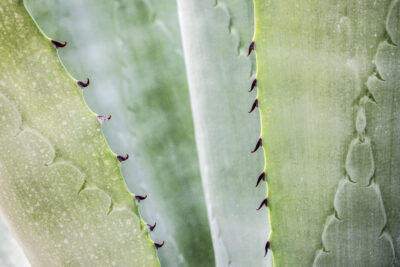
How to Safely Ship a Succulent: Tips for Mailing Plants

Shipping plants, especially delicate ones like succulents, requires special care and attention to ensure their safe arrival at their destination. Whether you are a plant enthusiast looking to share your green thumb with others or a business owner shipping plants to customers, knowing how to properly package and ship plants is crucial in order to prevent damage in transit.
We will provide you with valuable tips and guidelines on how to safely ship a succulent or any other type of plant. We will discuss the importance of choosing the right packaging materials, such as sturdy boxes and cushioning materials, to protect the plants during transportation. Additionally, we will explore the different shipping methods available, including expedited shipping and using heat packs during colder months to ensure the plants survive the journey.
- Use a sturdy box to protect the succulent during shipping
- Provide proper cushioning and padding
- Seal the box tightly
- Wrap the succulent in bubble wrap or tissue paper to prevent damage
- Use packing peanuts or crumpled newspaper to cushion the succulent inside the box
- Label the package as "fragile" to ensure careful handling
- Choose a shipping method that offers tracking and insurance for the package
- Ship the succulent during mild weather to avoid extreme temperatures
- Include care instructions and a note to handle the package with care
- Consider using expedited shipping for faster delivery and less transit time
- Frequently Asked Questions
Use a sturdy box to protect the succulent during shipping
When it comes to safely shipping a succulent, one of the most important factors is using a sturdy box to protect the plant during transit. A flimsy or weak box can easily get crushed or damaged, leading to potential harm to your precious succulent.
Choose a box that is made of thick and durable material, such as cardboard or corrugated cardboard. These materials provide a good level of protection and can withstand the rigors of shipping.
Make sure the box is large enough to accommodate the size of your succulent and any additional packaging materials you may need. You should leave enough space around the plant to add cushioning materials without squeezing or squishing the succulent.
It's also a good idea to reinforce the box with strong packing tape. This will help keep the box securely closed and prevent it from opening during transit.
 Succulent Transplant Shock: Causes, Symptoms, and Solutions
Succulent Transplant Shock: Causes, Symptoms, and SolutionsRemember to label the box appropriately, especially if the contents are fragile. Use clear and visible labels that indicate the presence of live plants and the need for careful handling.
Provide proper cushioning and padding
Once you have a sturdy box, the next step is to provide proper cushioning and padding to protect the succulent from any potential impacts or bumps during shipping.
Start by lining the bottom of the box with a layer of padding material, such as bubble wrap or packing peanuts. This will create a soft and protective base for your succulent.
Next, carefully place your succulent in the center of the box, making sure it is secure and not moving around. Use additional padding materials, like crumpled newspaper or tissue paper, to fill in any gaps and provide extra cushioning.
It's important to avoid using materials that are too heavy or dense, as they can put unnecessary pressure on the plant. Opt for lightweight and soft materials that can absorb shocks and vibrations.
Once the succulent is properly cushioned, close the box and shake it gently to ensure that nothing moves or shifts inside. If you feel any movement, add more padding until everything is snug and secure.
Seal the box tightly
After you have packed the succulent and provided sufficient cushioning, it's crucial to seal the box tightly to prevent any accidental openings or damage during transit.
 Caring for Succulents Planted in a Fire Stick: A Comprehensive Guide
Caring for Succulents Planted in a Fire Stick: A Comprehensive GuideApply strong packing tape along all the seams of the box, making sure to reinforce the corners and edges. This will help keep the box securely closed and prevent any potential mishaps while in transit.
Consider using additional layers of tape for added security, especially if the succulent is being shipped for long distances or through rough handling conditions.
Before sealing the box completely, double-check that all labels and necessary shipping information are properly attached and visible. This will ensure that the package is handled appropriately and arrives at its destination without any issues.
By following these tips and taking the necessary precautions, you can safely ship your succulent and ensure it arrives in excellent condition to its new home.
Wrap the succulent in bubble wrap or tissue paper to prevent damage
When shipping a delicate succulent, it is crucial to ensure its safety during transit. One effective way to do this is by wrapping the succulent in bubble wrap or tissue paper. This provides an extra layer of protection and helps prevent damage caused by rough handling or bumps along the way.
Begin by gently placing the succulent in the center of a sheet of bubble wrap or tissue paper. Carefully fold the sides of the wrap over the plant, ensuring that it is completely covered. Use tape or rubber bands to secure the wrap in place, making sure it is snug but not too tight.
Tip: Avoid wrapping the succulent too tightly, as this may cause damage to the leaves or stem. It is important to strike a balance between providing sufficient protection and allowing the plant to breathe.
 Succulent Care 101: Troubleshooting Brown Tips and Effective Fixes
Succulent Care 101: Troubleshooting Brown Tips and Effective FixesUse packing peanuts or crumpled newspaper to cushion the succulent inside the box
When shipping a delicate plant like a succulent, it is crucial to ensure that it arrives at its destination in pristine condition. One of the most important steps in safely mailing a succulent is to provide adequate cushioning inside the shipping box.
To protect your succulent during transit, consider using packing peanuts or crumpled newspaper as cushioning material. These items create a protective barrier around the plant and prevent it from shifting or getting damaged during transportation.
When using packing peanuts, make sure to fill the bottom of the box with a layer of peanuts. Then, carefully place your succulent in the center of the box and fill the remaining space with more packing peanuts. This will create a secure environment for the plant, minimizing the risk of breakage.
If you don't have packing peanuts on hand, crumpled newspaper can be an effective alternative. Simply crumple sheets of newspaper and place them around the succulent, ensuring that all sides are adequately cushioned. Remember to fill any empty spaces to prevent the plant from moving around.
It is essential to use enough cushioning material to provide ample protection but be careful not to overstuff the box, which could potentially harm the plant by applying excessive pressure.
Label the package as "fragile" to ensure careful handling
 Prevent Succulent Overgrowth: Tips for Maintaining the Perfect Size
Prevent Succulent Overgrowth: Tips for Maintaining the Perfect SizeWhen shipping a delicate plant like a succulent, it is crucial to take extra precautions to ensure its safe arrival at its destination. One of the first steps you should take is to label the package as "fragile." This simple but effective measure will alert the shipping carriers and handlers to handle the package with extra care.
Choose a shipping method that offers tracking and insurance for the package
When it comes to shipping delicate plants like succulents, it's crucial to choose a shipping method that provides tracking and insurance for the package. This ensures that your precious plant will be protected throughout its journey and you'll have peace of mind knowing that you can track its progress.
Ship the succulent during mild weather to avoid extreme temperatures
When it comes to shipping succulents, it's essential to choose the right time of the year. Extreme temperatures can be detrimental to the health of the plant during transit. Therefore, it's advisable to ship your succulent during mild weather conditions.
By doing so, you can minimize the risk of exposing the plant to freezing temperatures in winter or scorching heat in summer. It's important to remember that succulents are delicate and can suffer damage from extreme temperatures, which can lead to wilting, discoloration, or even death.
Before scheduling the shipment, check the weather forecast for both your location and the destination. Aim to ship the succulent when temperatures are moderate and stable, typically during spring or fall. This will help ensure the plant arrives in optimal condition.
Include care instructions and a note to handle the package with care
 Signs of Sun Damage in Succulents: How to Identify and Prevent it
Signs of Sun Damage in Succulents: How to Identify and Prevent itWhen shipping succulents or any other plants, it is crucial to ensure their safe arrival at their destination. To do this, it is important to include care instructions and a note reminding the recipient to handle the package with care. This will help minimize any potential damage during transit and increase the chances of the plants thriving after they are received.
Here are some tips on including care instructions and a gentle reminder:
- Clearly label the package: Include a label or sticker on the package indicating that it contains live plants. This will help alert the postal service and the recipient to handle the package with care.
- Include written care instructions: Inside the package, include a printed sheet or a handwritten note with detailed care instructions for the specific type of succulent being shipped. Include information on watering, sunlight requirements, and any special considerations for that particular plant. This will help the recipient properly care for the succulent upon arrival.
- Use clear and concise language: When writing the care instructions, use clear and concise language that is easy to understand. Avoid using technical jargon that might confuse the recipient, especially if they are new to caring for succulents.
- Highlight any specific vulnerabilities: If the succulent being shipped has any specific vulnerabilities or requirements, make sure to highlight them in the care instructions. For example, if the plant is sensitive to extreme temperatures or needs to be protected from direct sunlight, clearly state these precautions to ensure its well-being.
- Emphasize the importance of unpacking immediately: Include a note reminding the recipient to unpack the succulent as soon as possible after receiving it. This will prevent the plant from being confined in a dark box for an extended period, which can be detrimental to its health.
By including care instructions and a note to handle the package with care, you are taking proactive steps to ensure the safe shipping and successful arrival of your precious succulents. These simple precautions can make a significant difference in the health and well-being of the plants, allowing them to thrive in their new home.
Consider using expedited shipping for faster delivery and less transit time
When it comes to shipping delicate plants like succulents, time is of the essence. The longer the transit time, the greater the risk of damage to the plant. To minimize these risks, it is highly recommended to opt for expedited shipping services.
Expedited shipping ensures faster delivery, reducing the time the succulent spends in transit. This is crucial as succulents require adequate sunlight and air circulation to thrive. The longer they are confined in a box, the higher the chances of them experiencing stress or damage.
By choosing expedited shipping, you can significantly decrease the time your succulent spends in transit, ensuring a safer journey for your plant.
 Can Split Rock Succulents Develop Wrinkles?
Can Split Rock Succulents Develop Wrinkles?Properly package your succulent to protect it during transit
Once you've selected the expedited shipping option, it's essential to ensure your succulent is properly packaged to withstand the journey. Here are some tips to help you package your succulent securely:
- Select a sturdy box: Choose a box that is strong enough to withstand the rigors of shipping. Avoid using flimsy or damaged boxes as they may not provide adequate protection for your succulent.
- Use cushioning materials: Line the bottom of the box with cushioning materials such as bubble wrap or packing peanuts. This will provide a layer of protection for your succulent and help prevent it from shifting during transit.
- Wrap the succulent: Carefully wrap your succulent in tissue paper or bubble wrap, ensuring all delicate parts are adequately protected. Secure the wrapping with tape to keep it in place.
- Secure the pot: If your succulent is potted, make sure to secure the pot to prevent it from moving. You can use rubber bands or tape to hold it in place.
- Label the package: Clearly label the package as "Fragile" or "Live Plants" to alert the shipping carrier and handlers that the contents are delicate.
- Add instructions: Include instructions for the carrier on how to handle the package, such as "Keep upright" or "Avoid extreme temperatures."
Following these packaging guidelines will help safeguard your succulent during transit, increasing the chances of it arriving in pristine condition.
Consider using a heat pack or cold pack
Depending on the weather conditions during transit, it may be necessary to use a heat pack or cold pack to regulate the temperature inside the package. Extreme temperatures can be detrimental to succulents, so it's crucial to take precautions.
If you're shipping during colder months or to a colder region, a heat pack can help provide warmth and prevent your succulent from freezing. Conversely, if you're shipping to a hot climate, a cold pack can help maintain a cooler temperature inside the package.
Ensure you carefully follow the instructions provided with the heat pack or cold pack to avoid any potential harm to your succulent. Consulting with a local nursery or plant expert can also provide valuable insights on whether using these packs is necessary for your specific situation.
By considering the weather conditions and using heat or cold packs when required, you can further safeguard your succulent during transit.
Frequently Asked Questions
1. Can I ship succulents through the mail?
Yes, you can ship succulents through the mail. However, it is important to package them properly to ensure they arrive safely.
 Top Low Maintenance Indoor Succulent Plants for Easy Care and Beauty
Top Low Maintenance Indoor Succulent Plants for Easy Care and Beauty2. What materials do I need to safely ship a succulent?
You will need a sturdy box, bubble wrap, tissue paper, tape, and a heat pack (if shipping during colder months).
3. How should I package the succulent for shipping?
Wrap the succulent in tissue paper, secure it with tape, and place it in a small box filled with bubble wrap to prevent movement during transit.
4. How long can a succulent survive in transit?
Succulents can survive in transit for up to a week if packaged properly and shipped via expedited shipping to minimize the time spent in transit.
If you want to read more articles similar to How to Safely Ship a Succulent: Tips for Mailing Plants, you can visit the Care and Maintenance category.






You Must Read